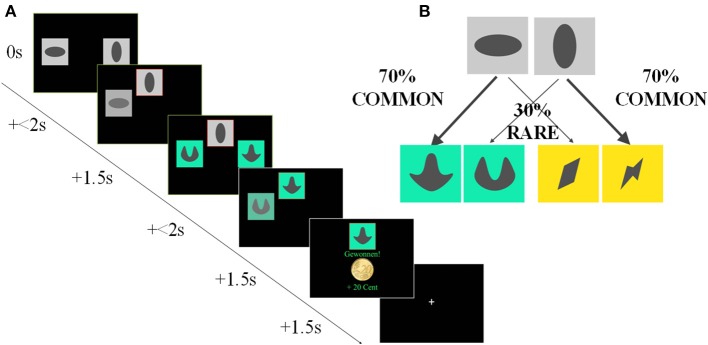Figure 2.

Sequential Decision-Making Task (Two-Step), according to Daw et al. (2011). (A) Trial configuration for the Experiment. Each trial consisted of two different stages, and each stage involved a choice between two stimuli. In the first stage, subjects chose between two abstract stimuli on a gray background. The chosen stimulus was highlighted by a red frame and moved to the top of the screen, where it remained visible for 1.5 s; at the same time, the other stimulus faded away. Subjects then reached a subsequent second stage. Here subjects saw one of two further pairs of colored stimuli and again chose between these. The monetary outcome following this second stage choice (gain or no gain of 20 cent) was then presented centrally on the screen. (B) One pair of colored second stage stimuli occurred commonly (on 70% of trials; “common trials”) after choice of one first stage stimulus, while the other pair was associated equally strongly with the other stimulus. On the remaining 30% of trials, the chosen first stage option resulted in a transition to the other second stage stimulus pair (“rare trials”). Reinforcement probabilities for each second stage stimulus changed slowly and independently according to Gaussian random walks with reflecting boundaries at 0.25 and 0.75.
